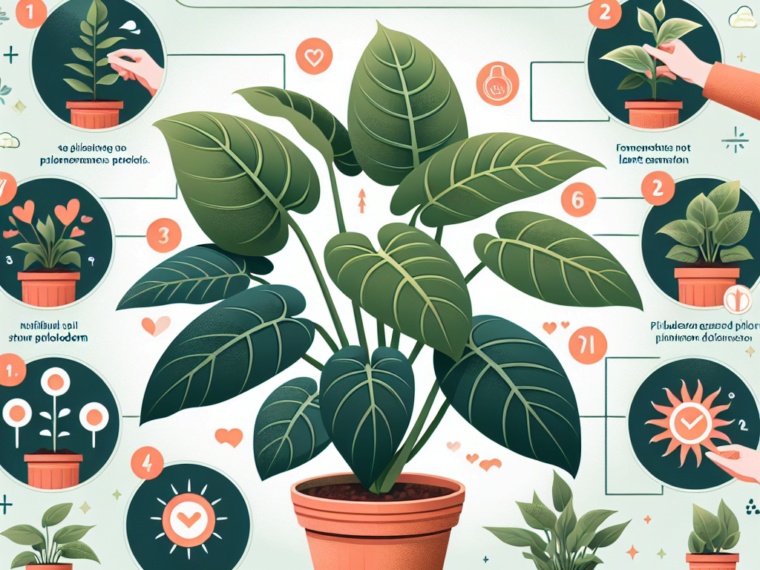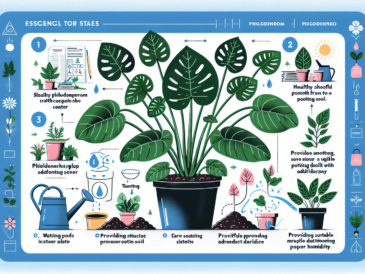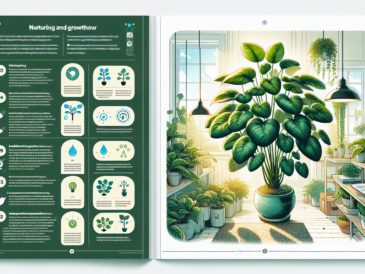Welcome, plant enthusiasts! In the universe of houseplants, the Philodendron genus shines bright as one of the most coveted. Here’s a little overview: These versatile plants have charmed plant owners around our homes and offices with their diverse species and lush foliage.
But why do we fancy them so? Perhaps it’s the ease of care or their ability to add a vibrant touch of greenery to any home setting. Whatever the case may be, we’re diving into the world of these delightful plants and sharing insights on how to grow them splendidly.
Understanding Philodendrons
In the plant family Araceae, you’ll find our beloved Philodendrons, sporting a panorama of leaf shapes and growth habits. For novice gardeners, distinguishing between varieties like the heart-leaf philodendron and Philodendron ‘Xanadu’ might seem daunting, but fear not—we’ll decode identifying characteristics to set your mind at ease.
Basics of Philodendron Care
Cultivating Philodendrons requires some know-how about their natural habitat—think rainforests in South America where they thrive under dappled sunlight. At home, they enjoy a spectrum of lighting conditions but fare best without harsh direct rays that can scorch their leaves. Offer ’em temperatures that hover warmly—preferably not plummeting below 60 degrees—and tune in that humidifier because they relish moist air too.
Soil and Planting Mediums Suitable for Philodendrons
When you’re ready to pot these green beauties, reach for a blend that drains like a dream yet holds onto just enough moisture. A mix akin to Miracle-Gro® Indoor Potting Mix is often suggested; however, feel free to play scientist by tweaking ingredients like bark, perlite, or even coconut coir into your concoction for a custom mix.
Watering and Nutrients
TIP: These are resilient plants, but getting watering right is crucial. Generally speaking, let that topsoil dry out a smidge before giving them another drink. On nutrients? A regular feed during growing months keeps ’em robust—grab some balanced fertilizer or compost tea, following label instructions diligently.
Propagation Techniques
Giddy over your plant and itching to multiply it? It’s easier than you might reckon! Snip off stem cuttings with a few leaves still attached—or use methods such as division or layering—and soon enough you’ll have more little Philo-friends sprouting up.
Pruning and Maintenance
Maintenance-wise, these plants aren’t needy: Prune away any leggy vines or yellowed leaves when necessary—which aids in keeping them bushy and full—and keep an eye out for signs that indicate something is amiss, so you can rectify it pronto!
Pest Management and Disease Control
Trouble may roll in on rare occasions when pests decide to crash at your Philodendron pads. Scan those leaves regularly for culprits like aphids or mealybugs—the usual garden suspects—and if spotted, treat them with neem oil or other remedies pronto!
Creating an Ideal Environment for Growth
A cozy corner indoors or a spot on the patio—these adaptable houseplants can flourish anywhere with just enough light and love. Curtain-filtered sunbeams inside? Why not! They also fancy accessories like humidity trays or pebble-water setups that kinda mimic their tropical origins.
Problem-solving Guidelines for Troubled Plants
If your Philos look downcast (maybe droopy leaves or stunted growth), don’t ignore this cry for help! Adjust light levels, reassess watering schedules, maybe even repot if root-bound—it’s all about tuning in and addressing those cries swiftly.
Advanced Care Techniques for Enthusiasts
Daring growers who yearn for more can dabble in hydroponics—all about delivering nutrients via water sans soil—or get artsy with kokedama balls…
Conclusion
To wrap up our chat on raising thriving Philo-kiddos,
Appendix: Additional Resources
Suggested reading materialOnline communities and social media groupsLocal gardening clubs specializing in tropical plants




